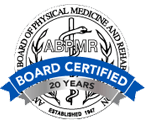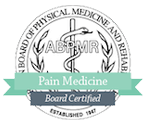Myofascial pain syndrome is a chronic condition in which trigger points (muscle knots) develop in certain muscles, usually ones that have been injured or overused. Jobs and recreational activities that involve repetitive motions, in which muscles repeatedly contract, are common causes. Trigger points can also be caused by stress and anxiety. Myofascial pain is most common in middle-aged adults, although people of any age may be affected.
Symptoms of Myofascial Pain
Patients with myofascial pain may experience deep, aching muscle pain that worsens over time; muscle and joint stiffness; and difficulty sleeping. These symptoms can significantly affect a person’s quality of life, and require medical attention if they do not subside. Patients with untreated myofascial pain syndrome may develop muscle weakness or fibromyalgia.
Treatment of Myofascial Pain
Effective treatment for myofascial pain usually involves a combination of approaches. Patients may benefit from physical therapy exercises, including stretching and massage, to relieve tension in the affected area. Another possible remedy is trigger-point injection, which involves inserting a needle into the affected muscle to relieve the tension causing the trigger point. Anti-inflammatories and anti-depressants may temporarily relieve symptoms, and help patients to sleep better.




